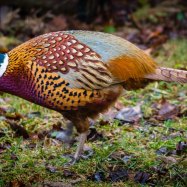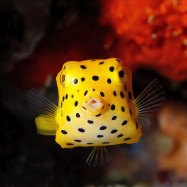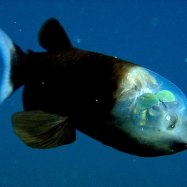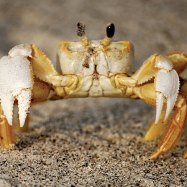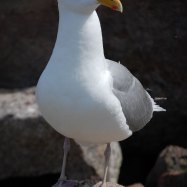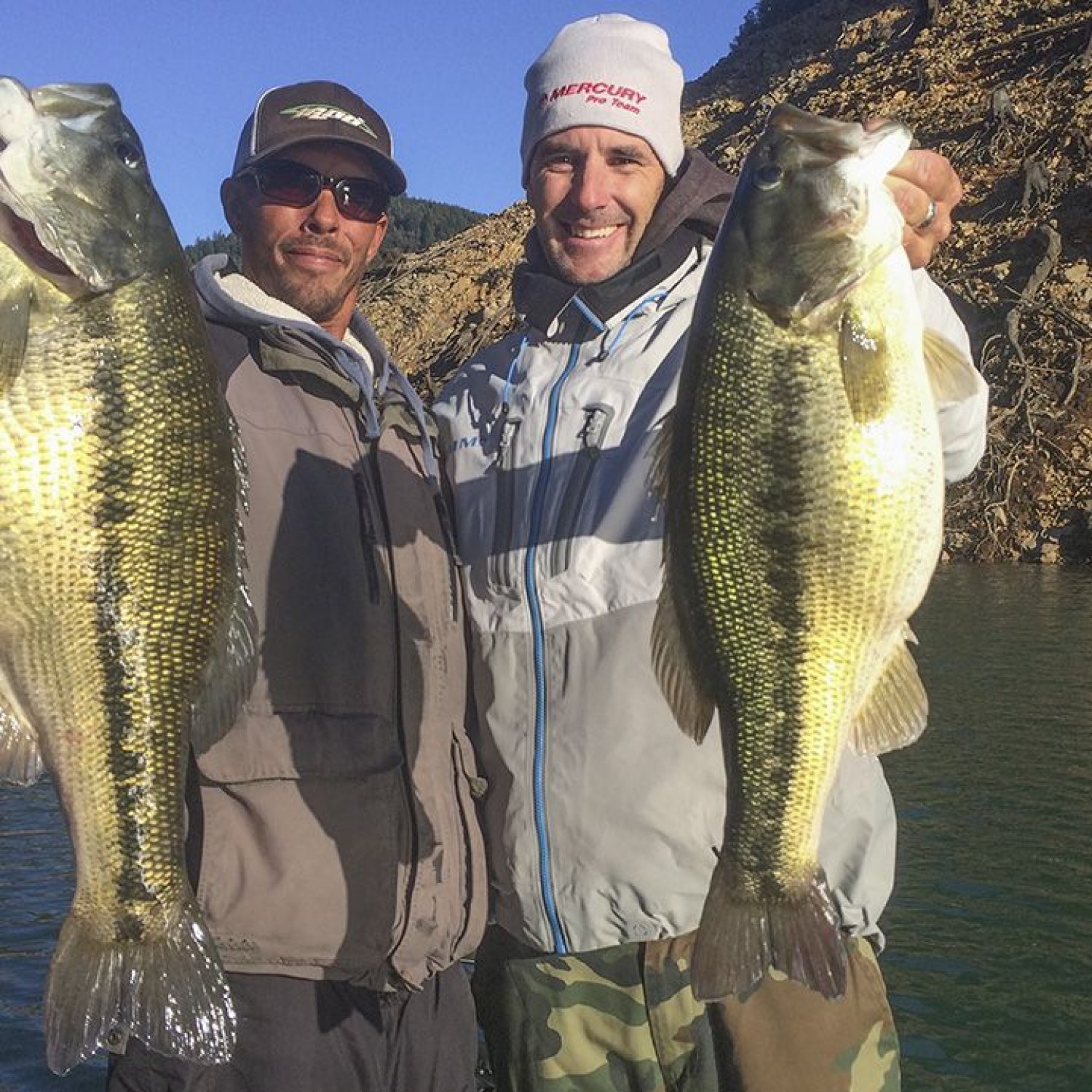
Spotted Bass
Up to 24 inches (61 cm)
The Spotted Bass, also known as Kentucky Bass, is a fierce freshwater fish that can grow up to 24 inches long. They're commonly found in lakes, reservoirs, and rivers, making them a favorite among anglers. With their streamlined and elongated body shape, they're fast and agile predators. Keep an eye out for these impressive fish on your next fishing trip! #SpottedBass #FreshwaterFishing #AnglersParadise #Lakes #Rivers #Reservoirs
Animal Details Summary:
Common Name: Spotted Bass
Kingdom: Animalia
Habitat: Freshwater
The Mighty Spotted Bass: A Freshwater Predator in the United States
The Spotted Bass (Micropterus punctulatus) is a fierce freshwater predator found in the United States. Also known as the Kentucky Bass or simply the Spotted Bass, this fish belongs to the Animalia kingdom, Chordata phylum, Actinopterygii class, Perciformes order, and the Centrarchidae family. Its scientific name, punctulatus, is derived from the Latin word "punctum" which means spot, reflecting its distinctive appearance.This species of bass is commonly found in lakes, reservoirs, and rivers, making it a popular game fish among anglers Spotted Bass. Its carnivorous nature and striking coloration make it a formidable predator and an attractive catch for fishermen. Let's dive deeper into the world of the Spotted Bass and discover what makes it a unique and fascinating creature.
Habitat and Geographic Distribution
The Spotted Bass is native to North America, specifically the United States, and is found in various freshwater habitats. Its distribution ranges from the Mississippi River drainage to the east coast, including the Great Lakes region. This species thrives in lakes, reservoirs, and rivers, and is most commonly found in the southern and central regions of the United States.One of the main factors that contribute to the widespread distribution of the Spotted Bass is its adaptability to various environments. They can survive in different water conditions, from clear to murky, and in both still and flowing waters. As long as there is an abundance of prey, this fish can thrive in almost any type of freshwater habitat.
Feeding Behavior
Spotted Bass are opportunistic predators with a voracious appetite Swedish Vallhund. They feed on a wide variety of prey, including smaller fish, crayfish, insects, and even small mammals. This makes them an important component of the aquatic ecosystem, helping to maintain a balance in the food chain.Their feeding technique is similar to other bass species, relying on their keen eyesight and acute sense of smell to detect prey. They often hunt in shallow waters near vegetation, using their streamlined and elongated body to maneuver through the water with speed and precision. Once they spot their prey, they will ambush and strike, using their sharp teeth to secure their meal.
Appearance and Anatomy
The Spotted Bass has a striking coloration that gives it its name. Its back is olive-green to gray, with dark spots along the sides of its body and a white belly. These dark spots are scattered all over its body, giving it a spotted appearance. This coloration serves as camouflage, allowing it to blend in with its surroundings and ambush unsuspecting prey.It has a streamlined and elongated body, similar to other bass species, which helps it to move quickly through the water. It also has a relatively small mouth compared to other bass species, with a lower jaw that extends slightly beyond the upper jaw. This unique feature allows it to consume prey that other bass species may struggle to eat.
On average, the Spotted Bass can reach a length of about 12-16 inches (30-41 cm), with some specimens growing up to 24 inches (61 cm) long. They can weigh up to 10 pounds (4.5 kg), although they are typically smaller in size. Females can grow larger than males, and the size of the fish may vary depending on their habitat and food availability.
Conservation Status and Threats
The Spotted Bass is not currently listed as an endangered species. However, like most fish species, their population is vulnerable due to various threats. Pollution, overfishing, and habitat destruction are some of the main factors that affect Spotted Bass populations. As humans continue to alter and exploit natural environments, the survival of this species becomes increasingly threatened.The Role of Spotted Bass in Ecosystems
As mentioned earlier, the Spotted Bass plays an important role in maintaining a stable ecosystem. As a predator, they help to control the population of smaller fish, preventing overpopulation and maintaining a balance in the water. They also serve as a food source for other predators, such as larger fish, birds, and mammals, contributing to the overall health of the ecosystem.In addition, their habits of hiding and foraging near vegetation also provide benefits for the environment. It helps to control plant growth, preventing overcrowding and maintaining a healthy balance in the aquatic environment.
Fishing and Recreation
The Spotted Bass is a highly sought after game fish and is a popular target among anglers. Its aggressive nature and willingness to take a variety of baits make it an exciting catch for both novice and experienced fishermen. In fact, it's often referred to as a "pound-for-pound" fighter, meaning that it puts up a good fight for its size.Fishing for Spotted Bass is also beneficial for the economy, as it provides recreational opportunities and supports local businesses. From charter companies to bait and tackle shops, the sport of fishing for Spotted Bass contributes to the local economy and supports jobs.
Conservation and Management Efforts
To ensure the sustainable management and preservation of the Spotted Bass population, various conservation and management efforts are being implemented. These include size and bag limits, catch-and-release practices, and habitat restoration projects.In addition, various organizations and government bodies are working together to monitor and regulate fishing practices, ensuring that the population of Spotted Bass remains healthy and balanced.
Conclusion
The Spotted Bass is a fascinating species that has captured the interest of anglers and scientists alike. Its adaptive nature, striking appearance, and important role in the ecosystem make it a valuable and intriguing fish to study and fish for.As we continue to learn more about the Spotted Bass and take measures to protect its population, we can ensure that this unique and powerful creature continues to thrive in the freshwater ecosystems of the United States. So next time you cast your line into a lake, reservoir, or river, keep an eye out for the mighty Spotted Bass. You never know, you may just catch one of these impressive fish.

Spotted Bass
Animal Details Spotted Bass - Scientific Name: Micropterus punctulatus
- Category: Animals S
- Scientific Name: Micropterus punctulatus
- Common Name: Spotted Bass
- Kingdom: Animalia
- Phylum: Chordata
- Class: Actinopterygii
- Order: Perciformes
- Family: Centrarchidae
- Habitat: Freshwater
- Feeding Method: Carnivorous
- Geographical Distribution: United States
- Country of Origin: North America
- Location: Lakes, reservoirs, and rivers
- Animal Coloration: Olive-green to gray on the back, with dark spots along the sides.
- Body Shape: Streamlined and elongated
- Length: Up to 24 inches (61 cm)
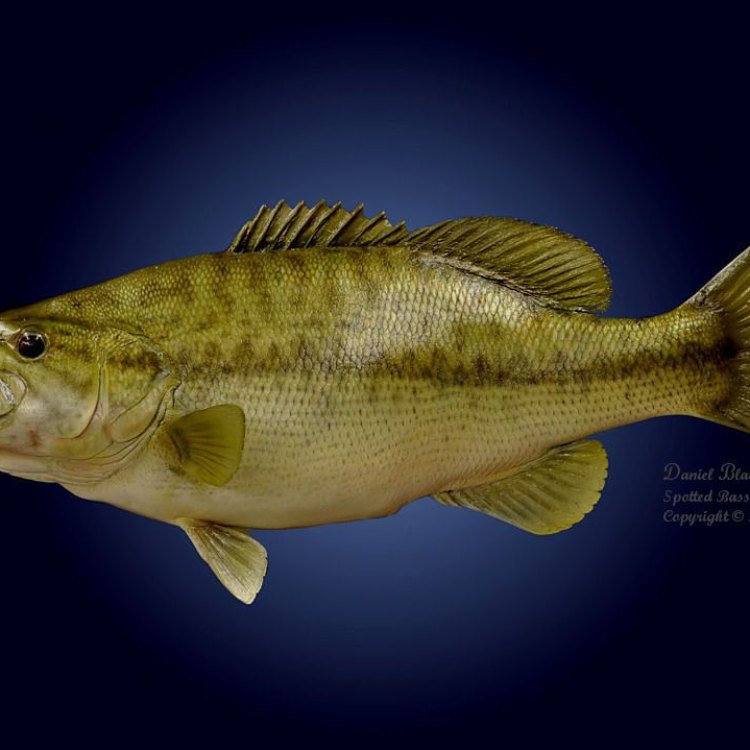
Spotted Bass
- Adult Size: 8–16 inches (20–41 cm)
- Average Lifespan: 5-7 years
- Reproduction: Sexual
- Reproductive Behavior: Spawning in spring
- Sound or Call: Grinding or rumbling sounds
- Migration Pattern: No regular migration pattern
- Social Groups: Solitary
- Behavior: Aggressive and territorial
- Threats: Habitat degradation, water pollution, overfishing
- Conservation Status: Least Concern
- Impact on Ecosystem: Popular game fish with economic and recreational value
- Human Use: Commercial and sport fishing
- Distinctive Features: Black blotch on the base of the tail
- Interesting Facts: Spotted bass are often mistaken for largemouth bass due to their similar appearance.
- Predator: Larger predatory fish, birds

Micropterus punctulatus
The Sleek and Mighty Spotted Bass: A Fascinating Fish in its Own Right
The world of bass fishing is filled with many different species, each with its own unique characteristics and traits. However, there is one species that often goes unrecognized and overshadowed by its more popular counterparts - the spotted bass. While not as famous as its cousin, the largemouth bass, the spotted bass is a fascinating and formidable fish in its own right. In this article, we will dive deep into the world of the spotted bass, exploring its physical features, behavior, threats, and conservation status, as well as its role in the ecosystem and human use PeaceOfAnimals.Com.The spotted bass, also known by its scientific name Micropterus punctulatus, is a member of the sunfish family (Centrarchidae). It is native to the eastern United States, particularly in the Mississippi River basin, and can also be found in some parts of Mexico and Canada. It is a medium-sized fish, with an adult size ranging from 8 to 16 inches (20 to 41 cm) and can weigh up to 4 pounds. It has a slender and elongated body, with an olive-green color on its back that fades into a whitish color on its belly. Its most distinctive feature is a dark black blotch on the base of its tail fin, giving it its common name, the spotted bass.
The average lifespan of a spotted bass is 5 to 7 years, with some individuals living up to 10 years in the wild. It reaches sexual maturity at around 1 to 2 years of age, and during the breeding season in the spring, the males will develop a distinct reddish coloration on their bellies. Spotted bass have a reproductive behavior of spawning, where the female uses her tail to create a nest on the lake or river bottom, and the male will defend it until the eggs hatch. This behavior makes them similar to other sunfish, such as bluegill and largemouth bass Sand Viper.
In addition to their striking physical features and reproductive behavior, spotted bass also have an interesting sound or call. When caught and removed from the water, they will produce a grinding or rumbling sound, similar to that of a cat purring. This sound is thought to be caused by the contraction of muscles associated with the fish's swim bladder, and it is believed to be a defense mechanism to ward off predators.
One of the most unique aspects of the spotted bass is its migration pattern. Unlike other fish, such as salmon, which have a regular and predictable migration pattern, spotted bass have no specific migration pattern. Instead, they can be found in various locations throughout the year, depending on water temperature, food availability, and breeding cycles.
Despite their solitary social groups, spotted bass are known to exhibit aggressive and territorial behavior. They will fiercely defend their nests and are known to attack other fish, including larger predators, if they feel that their territory is being threatened. This aggressive behavior also makes them popular game fish among anglers, who enjoy the challenge of catching these feisty creatures.
Unfortunately, spotted bass populations are facing numerous threats, mainly due to human activities. Habitat degradation, water pollution, and overfishing are the primary factors contributing to their decline. Spotted bass are highly sensitive to changes in water quality, and any pollutants can have a severe impact on their health and survival. Additionally, the removal of large, predatory fish, such as black bass and catfish, from their natural environment can lead to a surge in the spotted bass population, causing competition for resources and potential overfishing.
Despite these threats, the spotted bass is currently listed as Least Concern on the IUCN Red List, which means that its populations are stable and not at immediate risk of extinction. However, these fish still face many challenges, and conservation efforts are necessary to ensure their long-term survival.
One way spotted bass are making a positive impact is through their economic and recreational value. Spotted bass are a popular game fish, sought after by anglers for their impressive fighting abilities and delicious taste. Their recreational value is also widely recognized, with many fishing tournaments and competitions held specifically for catching spotted bass. This popularity has contributed to their economic value, as they generate revenue for local economies through tourism and fishing businesses.
The impact of spotted bass on the ecosystem is also a crucial aspect to consider. As predators, they play a vital role in controlling the population of smaller fish and maintaining a healthy balance in the food chain. Additionally, as a source of food for larger predators, such as birds and other fish, they contribute to the overall health and diversity of the ecosystem.
In terms of human use, the spotted bass is commercially harvested in some regions for food, although not as extensively as other species, such as largemouth bass. They are also raised in aquaculture facilities for stocking in recreational fishing ponds and lakes. However, it is essential to manage their populations sustainably to avoid overexploitation and ensure their continued presence in the wild.
In conclusion, the spotted bass may not be as well-known as its cousin, the largemouth bass, but it is undoubtedly a fascinating and impressive fish in its own right. From its striking physical features and unique sound to its aggressive behavior and value to both humans and the ecosystem, the spotted bass has much to offer. However, it also faces numerous threats and requires conservation efforts to ensure its survival for future generations. So, the next time you cast your line into the water, keep an eye out for the sleek and mighty spotted bass, and appreciate its role in the world of fishing and the natural world.

The Mighty Spotted Bass: A Freshwater Predator in the United States
Disclaimer: The content provided is for informational purposes only. We cannot guarantee the accuracy of the information on this page 100%. All information provided here may change without prior notice.



